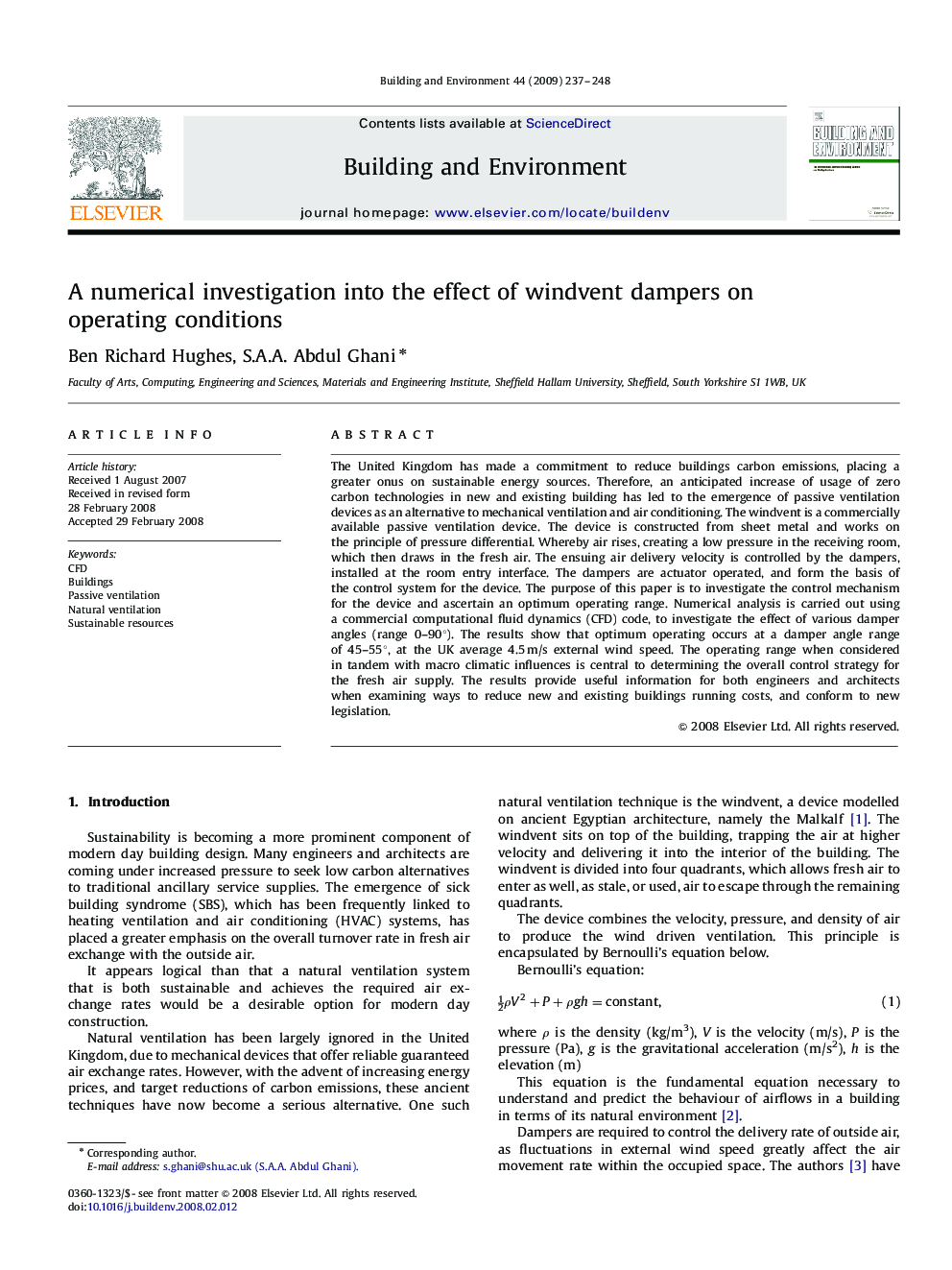| Article ID | Journal | Published Year | Pages | File Type |
|---|---|---|---|---|
| 249673 | Building and Environment | 2009 | 12 Pages |
The United Kingdom has made a commitment to reduce buildings carbon emissions, placing a greater onus on sustainable energy sources. Therefore, an anticipated increase of usage of zero carbon technologies in new and existing building has led to the emergence of passive ventilation devices as an alternative to mechanical ventilation and air conditioning. The windvent is a commercially available passive ventilation device. The device is constructed from sheet metal and works on the principle of pressure differential. Whereby air rises, creating a low pressure in the receiving room, which then draws in the fresh air. The ensuing air delivery velocity is controlled by the dampers, installed at the room entry interface. The dampers are actuator operated, and form the basis of the control system for the device. The purpose of this paper is to investigate the control mechanism for the device and ascertain an optimum operating range. Numerical analysis is carried out using a commercial computational fluid dynamics (CFD) code, to investigate the effect of various damper angles (range 0–90°). The results show that optimum operating occurs at a damper angle range of 45–55°, at the UK average 4.5 m/s external wind speed. The operating range when considered in tandem with macro climatic influences is central to determining the overall control strategy for the fresh air supply. The results provide useful information for both engineers and architects when examining ways to reduce new and existing buildings running costs, and conform to new legislation.
